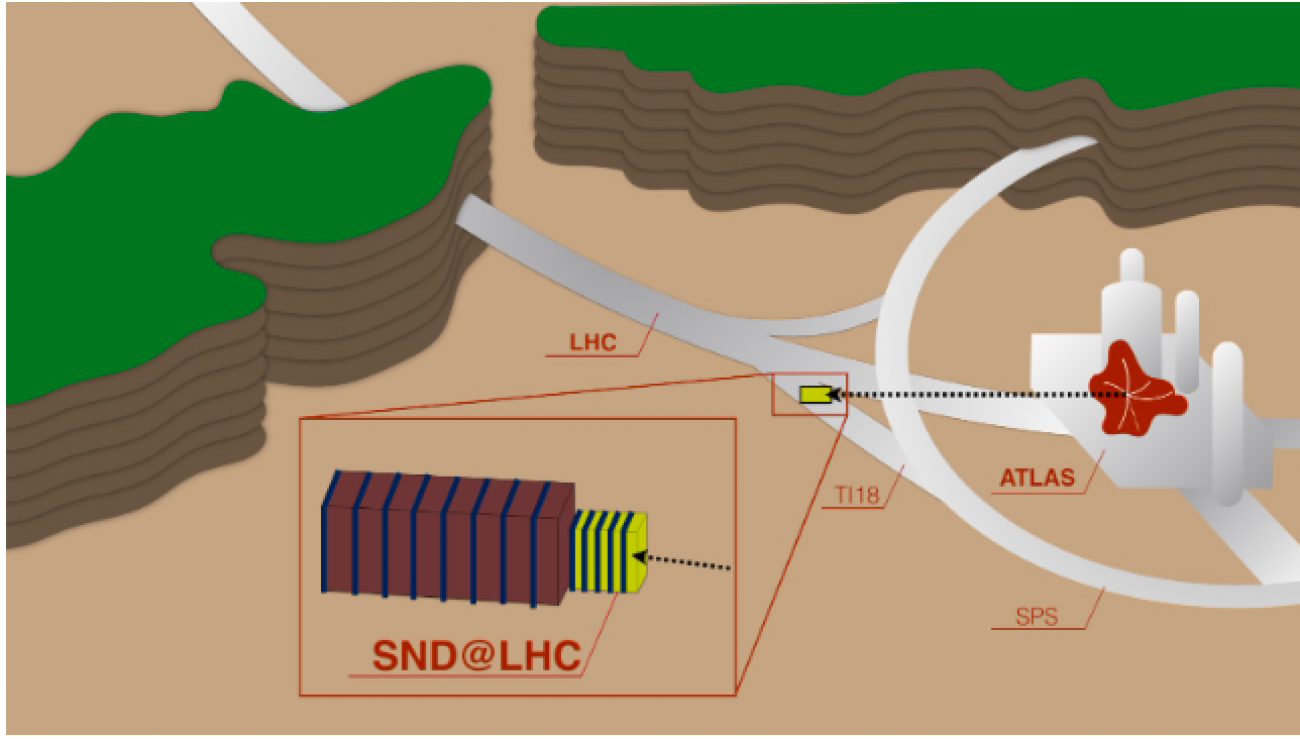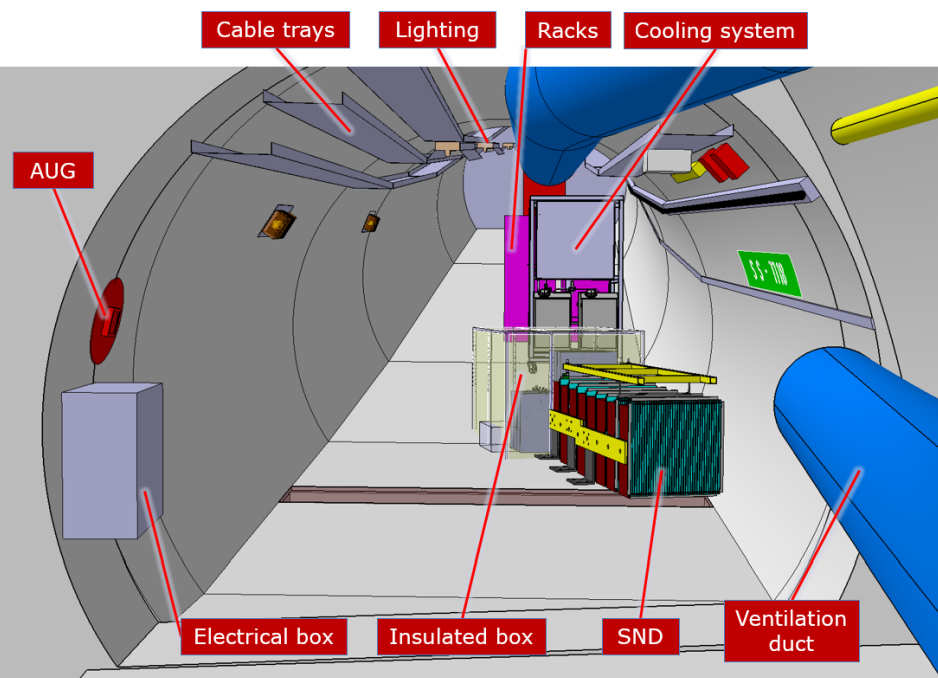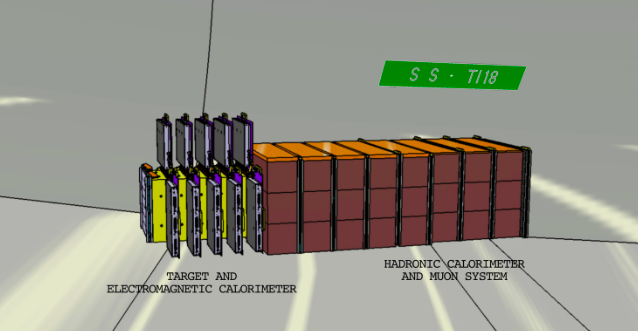SND@LHC
SND@LHC is a recently approved, compact and stand-alone experiment to perform measurements with neutrinos produced at the LHC in a hitherto unexplored pseudo-rapidity range of 7.2 < 𝜂 < 8.6, complementary to all the other experiments at the LHC, including FASER.
Two effects make it possible and particularly interesting to construct and operate a compact neutrino detector at the LHC. The high luminosity of proton-proton collisions achieved by the machine lead to a large neutrino flux in the forward direction, and the high neutrino energies imply relatively large neutrino cross-sections. As a result, even a detector with a relatively modest size to fit into one of the existing underground areas has a significant physics potential. Machine-induced backgrounds decrease rapidly with increasing distance from the interaction point and away from the beam line.
Proposed implementation of the detector close to the ATLAS experiment.
Sensitivity to the gluon in the proton
In the pseudo-rapdity range explored by the experiment, electron neutrinos and anti-neutrinos are predominantly produced by charmed-hadron decays. As a result, SND@LHC is capable of measuring charmed-hadron production indirectly through the observation of electron neutrinos and anti-neutrinos. Performance studies show that the charmed-hadron production in the SND@LHC pseudo-rapidity range can be determined with an accuracy of 35%. This result will be used to constrain the gluon parton density function in an unexplored region of very-small x. This is of particular interest also for experiments operating at future larger accelerators where this regime is relevant.
Outline of the target, the calorimeter and muon system


